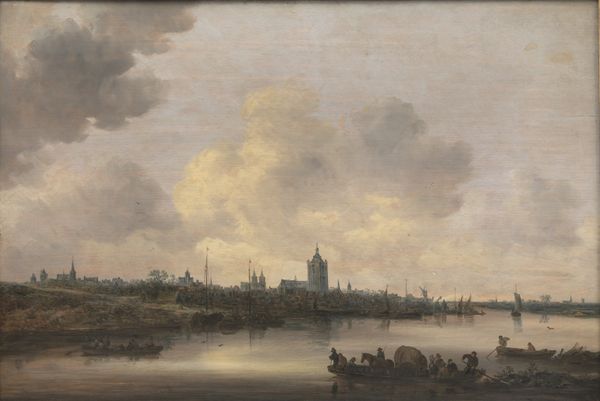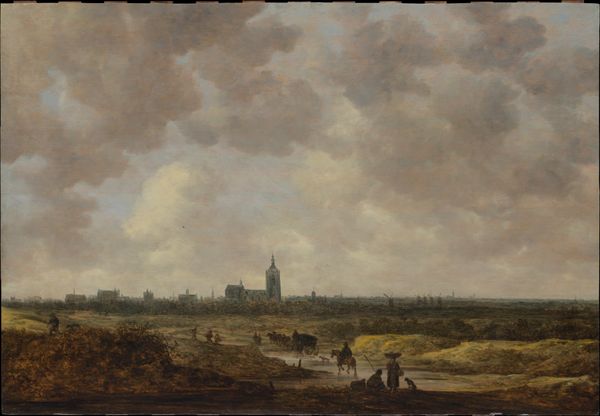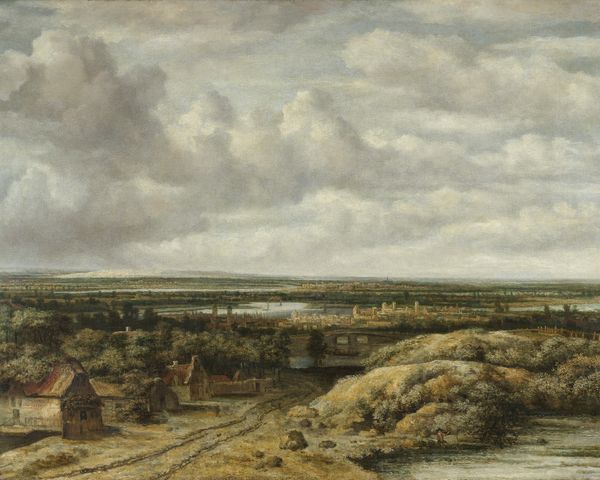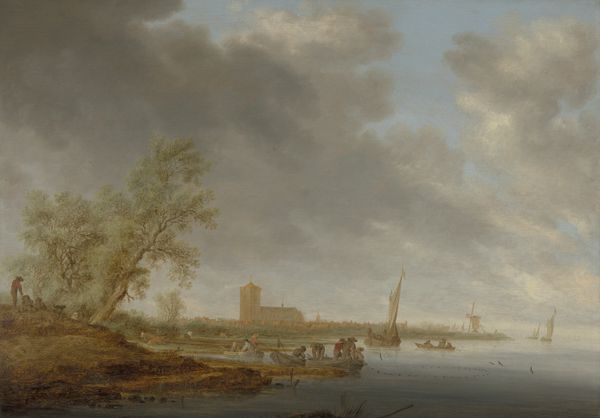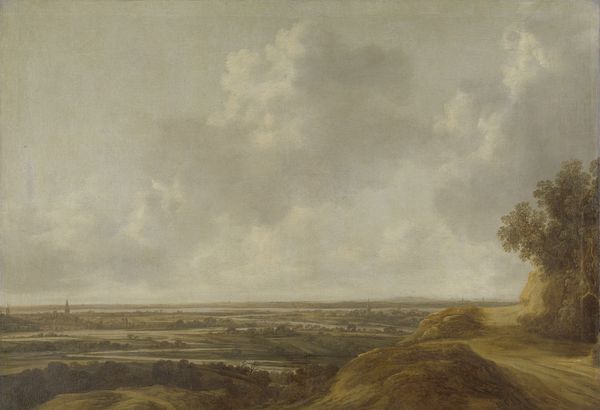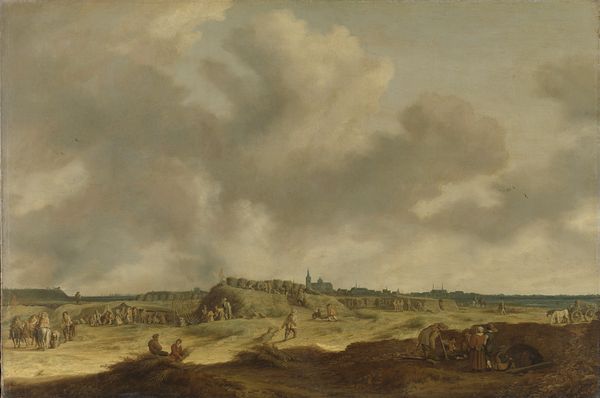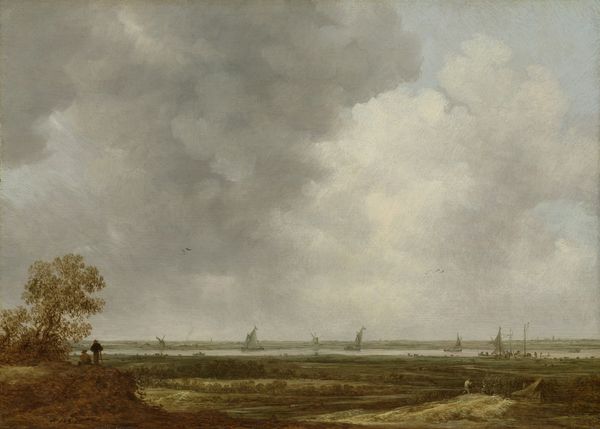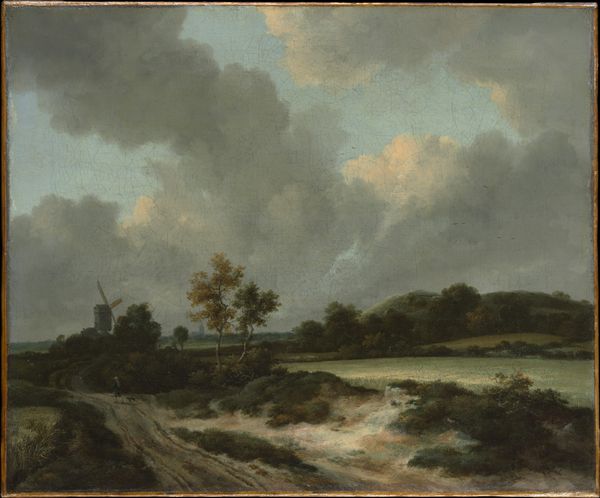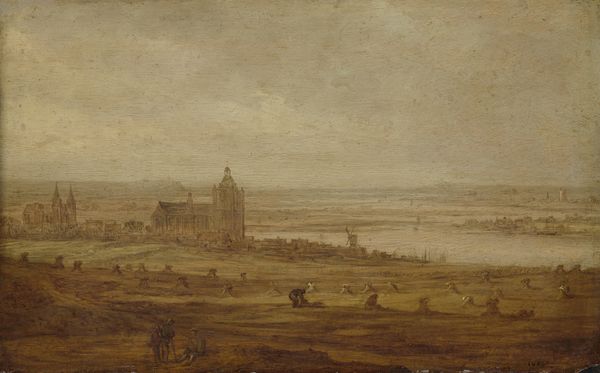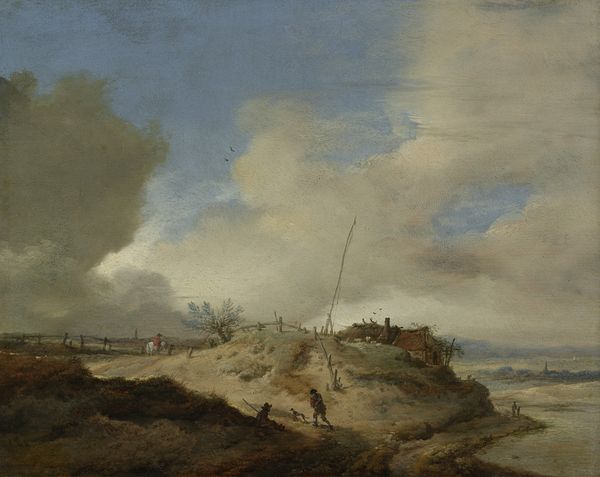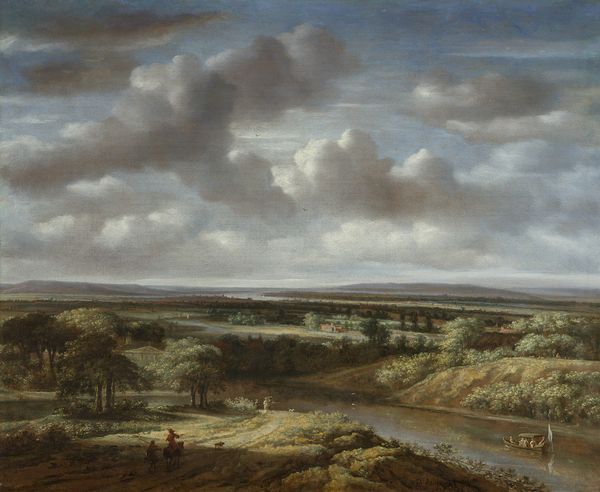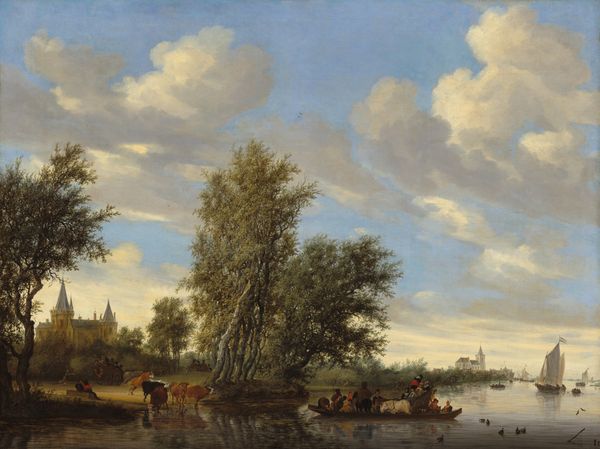
#
amateur sketch
#
charcoal drawing
#
possibly oil pastel
#
charcoal art
#
underpainting
#
fog
#
watercolour illustration
#
charcoal
#
watercolor
#
mist
Dimensions: overall: 101.6 × 135.26 cm (40 × 53 1/4 in.) framed: 127.64 × 161.93 × 5.72 cm (50 1/4 × 63 3/4 × 2 1/4 in.)
Copyright: National Gallery of Art: CC0 1.0
Curator: Jan van Goyen’s "View of Rhenen," painted in 1646, presents us with a seemingly placid Dutch vista. What strikes you first about this piece? Editor: The sky is overwhelming! It takes up at least two-thirds of the canvas and dictates the whole mood, which I find melancholic, almost ominous. The subtle gradations of light and shadow in the clouds are particularly remarkable. Curator: Indeed. Van Goyen's skill lay in his economical use of materials and efficient studio practice. He prepared canvases with a cheap, tinted ground, and the paint application was rapid. Such landscape paintings were commodities. They fulfilled a demand from the emerging middle class. Editor: Interesting. For me, though, it’s the composition that really stands out. Notice how the winding road draws the eye into the scene, leading to the town with its prominent church tower? It creates depth and a sense of journey. Curator: Consider that that ‘journey’ wasn’t merely aesthetic. Viewers were participating in an active and expanding Dutch economy. They were buyers and traders shaping the landscape. Art became entwined with broader societal trends like urbanization. Editor: But look at those earthy tones, that limited palette. Van Goyen masterfully uses muted browns, greys, and greens to evoke a sense of realism, a quiet dignity. And the placement of the windmills on the right horizon counterbalances the imposing tower—a very balanced and serene perspective on Dutch prosperity, I must add. Curator: And yet these “realistic” touches must be put in their commercial context. Art historians have discussed his “tonal” style, referring to this preference for muted, nearly monochromatic palette as one developed, in part, for efficiency in the studio to generate paintings to satisfy market demand. The ‘fog’ and ‘mist’ that some have observed is the product of labor efficiencies. Editor: Fascinating to consider, thank you. The nuances within that limited spectrum definitely reveal something essential about the Dutch countryside— its open skies and calm waters offer, overall, such simple grandeur! Curator: Well, it is this intersection of artistic talent and a thriving mercantile system that leaves an intriguing impression about life and the social fabric of the era, no question about it.
Comments
No comments
Be the first to comment and join the conversation on the ultimate creative platform.

